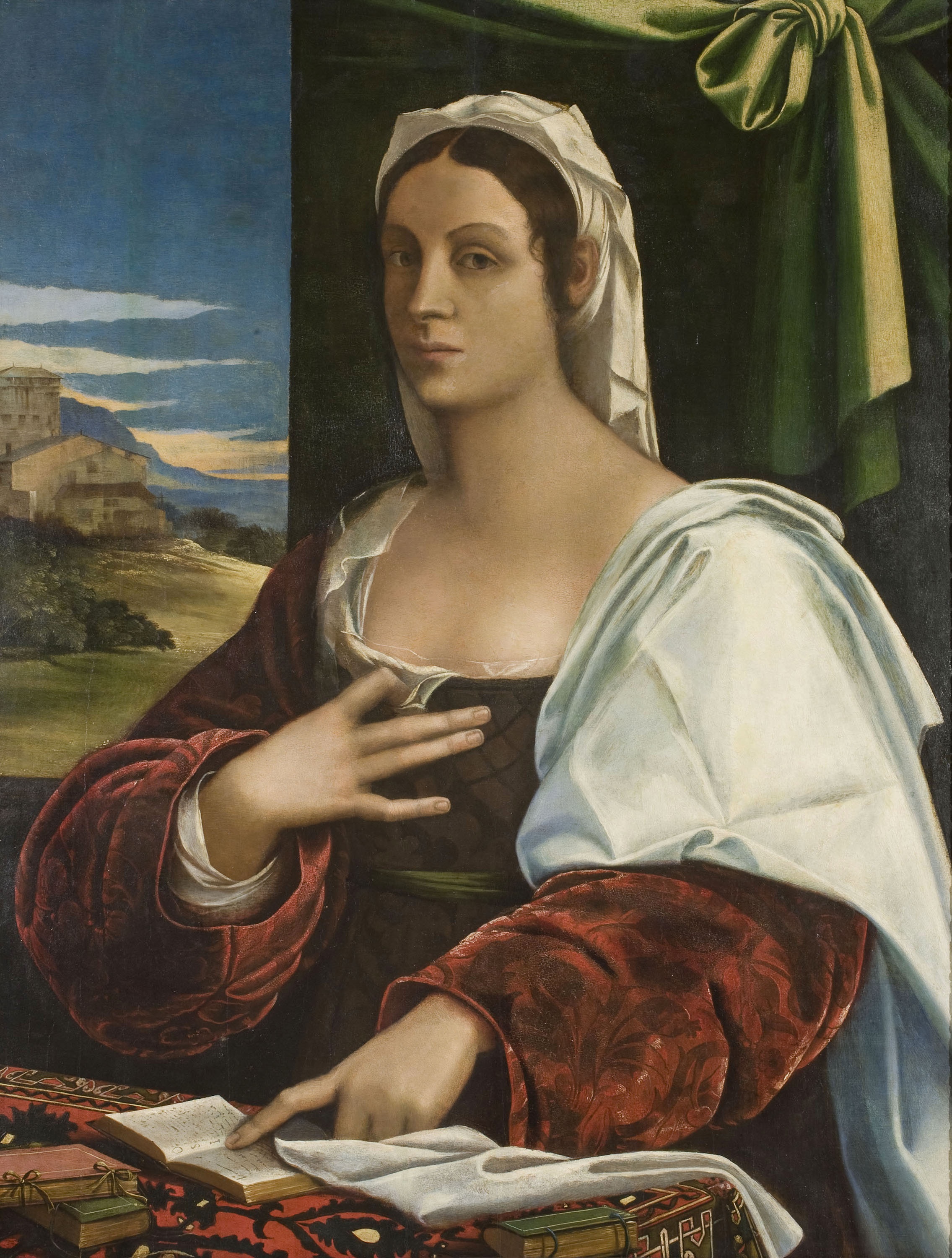Vittoria Colonna[?]

Vittoria Colonna[?]
There is no gate, no lock, no bolt that you can set upon the freedom of my mind.
Virginia Woolf (1928)
From the fifteenth century onwards, humanism promoted a new mentality that placed the individual (man) as the centre and measurement of all things (androcentrism was settled). This fact would lead to the emergence of new genres associated with the interests and desires of a new clientele in the artistic field. In this sense the portrait appears promoted as an image of power. At this time, the feminine portrait would become something valuable, as a symbol of private property. Similarly, we also find portraits of women that deconstruct the socially assigned role. This is the case of Vittoria Colonna (aristocrat, cultured, refined, she wrote love poetry and reflective prose on religious and spiritual issues). Admired by great men of her time such as Baldassare de Castiglione (author of The Book of the Courtier), Leonardo Da Vinci, who immortalized her in a portrait, or Michelangelo, who was strongly influenced by her, leaving a broad epistolar relation. However, she also had detractors, those who remained obsessed with moving the women away from the world of arts and erudition. If we look at the work, we can see how, while throwing a strong glance at the viewer with her left index finger, she points at an open book and rests her right hand on her chest and indicates the origin of her true passion.
Vittoria Colonna[?], Sebastiano del Piombo, 1520-1525









